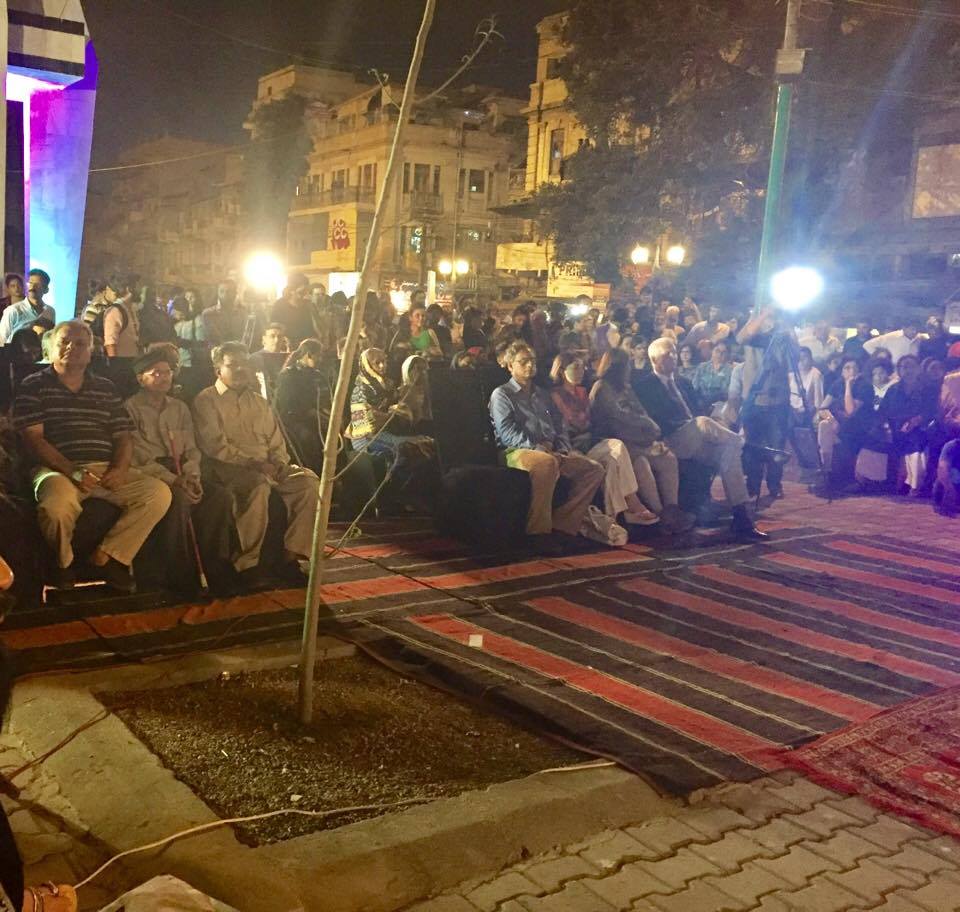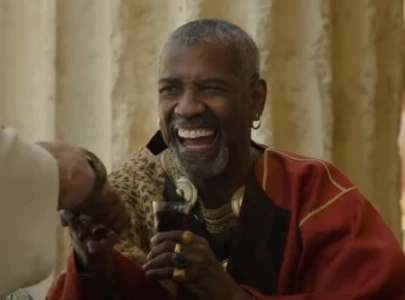
Student exchanges promote cultural harmony
The community centre itself, a public space meant for the display of art and culture and to generate democratic civil society discourse is an aesthetically pleasing, yet low-key space housed in two rooms at a distance of twenty feet from the Chowk.



The launch of the centre took place yesterday at the Chowk itself, a square of the oldest residential area located in South Karachi. The event was attended by architects, academics, politicians and civil society activists -Sharmeen Obaid and Sharmila Farooqui to name a few.
Pakistan Chowk, a locality that housed many middle class and upper middle-class migrants post-partition, a vicinity that defined the face of a quaint essential muhalla in the urban space of this city, a neighbourhood that became an educational hub because of its close proximity to medical and engineering schools and holds the memories of first generation writers, doctors and engineers of post-partition Karachi, has over the years turned into a heavily commercialised traffic –ridden area. The vision behind the initiative was to document the stories from its earliest residents and present-day dynamics and transform the locality in what it used to be.

The Chowk, which had previously been a garbage dump for the residents of surrounding apartment buildings, has been cleaned up and reclaimed as a public city space, available to the residents for recreation and civil society engagement.
“Women would knit sweaters and medical would students used to study under the lamp-posts of this very Chowk,” recalls the writer Asif Aslam Farrukhi, his words emitting emotional attachment to the city. “1947, my father came to Karach from India. We took a tanga from the station to maneuver through this new city. ‘Take me to the best place in the city,’ my father asked the tanga driver who brought us straight to Pakistan Chowk where we bought our first house right across this street.”

“I want this space to be engaged by poets from India, scultors from Sri Lanka and painters from Bangladesh,” said German Consul General in Karachi Rainer who also donated a German monument for the Chowk, the only foreign artifact inhabiting the space.
The remarkable part about Marvi’s project is the concept of 'Muhalla Saazi' that her team introduced. It is a mechanism that ensures that the rehabilitation process turns into a sustainable model. The notion entails active engagement from within the community inhabiting the space, as opposed to a classist intervention from an outsider. “We would clean the space and come back to find more garbage dumped as the inhabitants of the apartments would toss their trash bags on the Chowk from their balconies. We found a solution to this insidious problem when we reached out to the residents and found volunteers who offered to help with the waste management of the locality and keep the Chowk clean,” she told the audience.
The rehabilitation process was turned into a material reality by the keen interest and efforts of Sharmila Farooqi, we were told. “No government funds were used in the rehabilitation of this Chowk,” she shared while dwelling on the importance of public-private partnership in projects like these.

Ironically enough, as much as the addresses claimed to make the space available to local communities for dialogue, most of them made in English, until the I am Karachi spokesperson, Ambareen Thompson proceeded to the stage. “I will speak in 'minglish', amalgam of words from Urdu and English because that will be more inclusive for the audience,” she said.
“If you move around the city, you see our walls reek with hate and violence, hateful speech chalked on them. So a few years ago, we at I am Karachi decided that we need to take ownership of the city from within and transform the city-space. Fortunately, the artist community came forward and collaborated with us, painting the walls with truck art and other indigenous patterns,” she added.
The event was concluded with dastaan-goi, the art of story-telling that seems to have been a forgotten skill. Despite the fact that the tales are written in dense Urdu, the eloquent narrator managed to maintain audience interest, finishing the event on the sweet notes of Dastaan-e-Ameer Hamza.
Violence on campus: Call for promoting culture of dialogue
The project claims to rehabilitate public spaces for the residents of Karachi and make the community centre available for commoners and as such the event reflected the visionary’s motto. Despite being attended by politicians and high profile personalities, the launch was open and equally accessible to everyone and anyone interested in the cause. Families from the neighbouring houses showed solidarity for the cause by attending the event and strolling pedestrians stopped by to listen to the Dastaan goi. There was no sight of police mobiles, barbed wires or barricades. In Marvi’s words, the inauguration was a “small, non-fancy” affair but enjoyable nonetheless.
Have something to add in the story? Share it in the comments below.





1731843133-0/Express-Tribune-(5)1731843133-0-270x192.webp)
1731835314-0/Express-Tribune-(3)1731835314-0-270x192.webp)
1731831463-0/Untitled-design-(19)1731831463-0-270x192.webp)
1731829827-0/Untitled-design-(15)1731829827-0-270x192.webp)








COMMENTS
Comments are moderated and generally will be posted if they are on-topic and not abusive.
For more information, please see our Comments FAQ